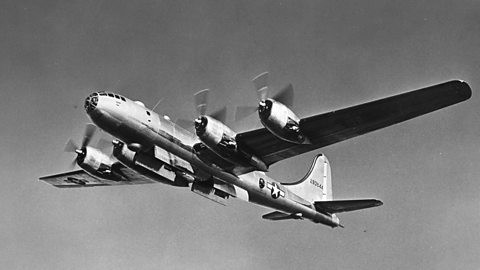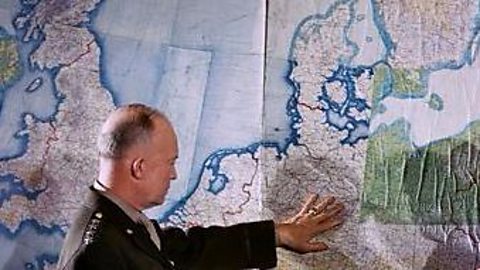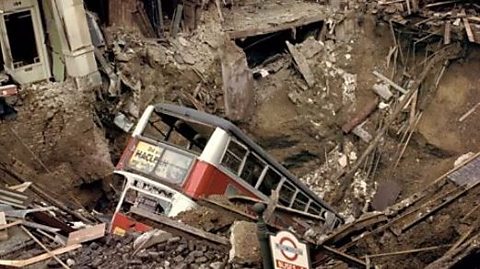What happened on 6 August 1945?
In the small hours of a warm summer day, the B-29 Superfortress Enola Gay flew from a US base on Tinian over the Japanese mainland. In the hold was an experimental bomb, codenamed Little Boy. The target: Hiroshima.
In Hiroshima the air raid sirens had sounded twice that morning already. On both occasions the all clear followed swiftly. Enola Gay faced no resistance as it dropped the bomb. Forty five seconds later the city was destroyed in a blinding instant. Eighty thousand men, women and children were killed and tens of thousands wounded, disfigured and poisoned by radiation from the bomb.
Three days later, another nuclear bomb was dropped on Nagasaki. A week later, Japan surrendered. The bomb brought World War Two to a sudden end, but was it right to use it?
Why did America use the bomb?
Conclusion of the war
The bomb was dropped to force a quick Japanese surrender. American commanders said it would save money and the lives of American servicemen and Japanese soldiers and civilians too. They said that to continue the war for weeks or months with conventional bombing and a US land invasion could have caused millions of Japanese deaths.
Retribution against the Japanese
President Truman justified his decision by pointing to the unprovoked Japanese attack on Pearl Harbour and the murder of American prisoners. A few days after the bombing he wrote: “When you have to deal with a beast you have to treat him as a beast.”
General Curtis Le May (US Air Force), Toshikazu Kase (Japanese Foreign Ministry) and Averell Harriman (US Ambassador to Russia) discuss their opinions on the bomb. Clip: World at War (Fremantle Media).
Demonstration of power
The development of the bomb cost billions of dollars, and American leaders wanted to justify the expense. They wanted to demonstrate to the Japanese that they faced overwhelmingly superior forces. They also wanted their new rivals, the Soviet Union, to see their powerful new weapon in action.
Was it a just decision?
In 1945, the idea of just war was firmly established in international law. In a just war, only combatants may be specifically targeted. Harm caused to civilians must be proportional to military ends and any harm caused must be necessary for the achievement of military goals. However, some argue that all citizens contribute to the war effort and can be a legitimate target in some cases.
INTERACTIVE: How did people react?
Click or tap each of the icons below to discover some of the surprising things key people thought at the time.
Was it right to use the bomb?
In this video, photographer Yoshito Matsushige describes what it felt like to be in Hiroshima immediately after the explosion. His photographs are the only known images taken in the city on the day of the bombing.
Clip: Days that Shook the World: Hiroshima (´óĎó´«Ă˝ Two, 2003)
Learn more about this topic:
WW2: Countdown to Hiroshima: The bomb that changed the world. document
A timeline of the events in the days and hours before the dropping of the atomic bomb on Hiroshima, Japan.

WW2: How close did D-Day come to failure? document
Over 150,000 British, US and Canadian soldiers had landed by air and sea and pushed their way several miles inland. But what if the invasion hadn't gone to plan?

WW2: What would you have done when the bombs fell? document
The Blitz of WW2, sometimes known as the London Blitz, was the German bombing campaign that lasted eight months and targeted 16 British cities.
